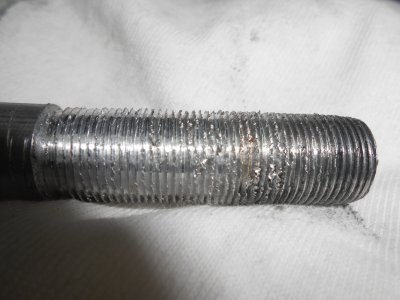- Joined
- Apr 13, 2014
- Messages
- 82
First, let me say that I am a novice when it comes to machining and thread cutting, unless it has to do with using taps and dies. I have been using some aluminum scraps from a friends work to practice on. The pitch and diameter of my practice pieces has been satisfactory, although the finish not so much. Here is what I'm doing:
Spindle speed: 230 RPM, HSS threading tool, Marvel Mystery Oil.

I tried the threads out and that is the reason for the smooth first few threads. Thanks for the advice. God bless.
Jon In Tucson
Spindle speed: 230 RPM, HSS threading tool, Marvel Mystery Oil.

I tried the threads out and that is the reason for the smooth first few threads. Thanks for the advice. God bless.
Jon In Tucson

